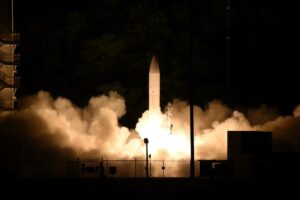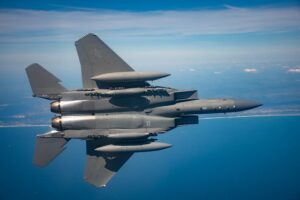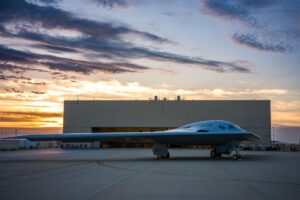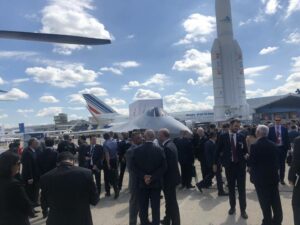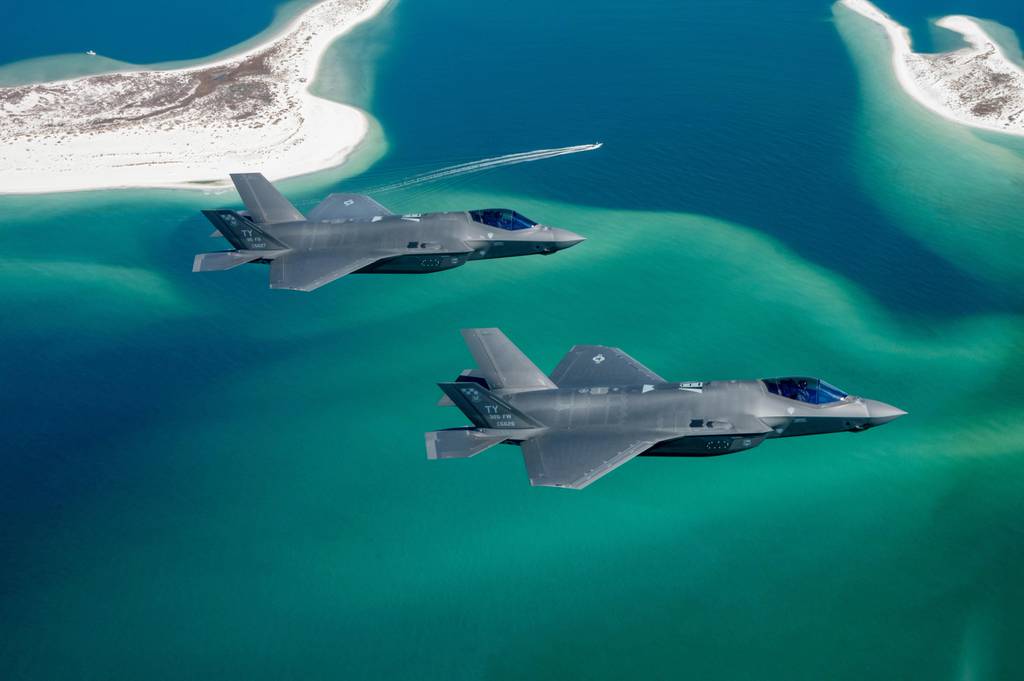
WASHINGTON — The Pentagon expects to start issuing early next year the first in a series of sole-source contracts to Pratt & Whitney to upgrade the F-35 Joint Strike Fighter’s engines.
In a notice posted online Monday, the government said the follow-on contract actions to RTX-owned Pratt & Whitney will begin in the second quarter of fiscal 2024, and continue through the end of December 2031.
The estimated value of the contracts was not immediately available, but Jen Latka,, vice president for Pratt’s F135 program, told reporters in December 2022 the ECU’s development would likely cost about $2.4 billion.
Pratt & Whitney, which makes the F135 engines that power all three version of the F-35, said in a separate statement Tuesday it expects to finish the preliminary design of its Engine Core Upgrade for the F-35 Joint Strike Fighter in December. The company added that it will be ready for the government’s official review of that design the following month.
The Engine Core Upgrade is intended to provide more power and cooling capabilities to the F-35 without requiring its current F135 engines to be replaced with a new design. Defense officials say the power and cooling boost will be necessary as the F-35 continues to be upgraded, particularly with a slate of improvements known as the Block 4 modernization, which will include greater weapons capacity, new sensors, and improved electronic warfare and target recognition capabilities.
“Pratt & Whitney has 600 employees fully dedicated to this effort, and we’re on track to deliver F-35 operators the power needed to enable Block 4 capabilities and beyond starting in 2029,” Jen Latka, vice president for Pratt’s F135 program, said in a statement.
The Pentagon’s sole-source notice said the upcoming contracts will cover work for the ECU’s engineering and manufacturing phase, including maturing its design, manufacturing and developing test articles and integrating weapon systems.
The notice did not say how much the contracts might be worth, but Latka told reporters in December 2022 the ECU’s development would likely cost about $2.4 billion.
The Pentagon had also considered a new engine design from General Electric Aerospace, dubbed the XA100, based on adaptive engine technology. The Air Force was keenly interested in GE’s XA100 and its greater power and cooling abilities for the F-35A jets it flies.
However, the Pentagon concluded GE’s design likely wouldn’t work for the Marine Corps’ vertical takeoff F-35B variant, and had doubts about its suitability for the Navy’s carrier-based F-35C. Those worries, as well as concerns over the GE adaptive engine’s potential costs, led the Pentagon to stick with and upgrade the F-35′s current engine in a big win for Pratt & Whitney.
Stephen Losey is the air warfare reporter for Defense News. He previously covered leadership and personnel issues at Air Force Times, and the Pentagon, special operations and air warfare at Military.com. He has traveled to the Middle East to cover U.S. Air Force operations.
- SEO Powered Content & PR Distribution. Get Amplified Today.
- PlatoData.Network Vertical Generative Ai. Empower Yourself. Access Here.
- PlatoAiStream. Web3 Intelligence. Knowledge Amplified. Access Here.
- PlatoESG. Carbon, CleanTech, Energy, Environment, Solar, Waste Management. Access Here.
- PlatoHealth. Biotech and Clinical Trials Intelligence. Access Here.
- Source: https://www.defensenews.com/air/2023/11/28/pratt-to-start-receiving-f-35-engine-upgrade-contracts-in-early-2024/
- :has
- :is
- :not
- 10
- 2022
- 2024
- 2031
- 70
- a
- abilities
- About
- actions
- adaptive
- added
- Aerospace
- AIR
- Air Force
- All
- also
- and
- AS
- At
- available
- based
- BE
- begin
- Beyond
- Big
- Billion
- Block
- boost
- but
- capabilities
- Capacity
- COM
- company
- Concerns
- concluded
- considered
- continue
- continues
- contract
- contracts
- Core
- Cost
- Costs
- cover
- covered
- Current
- December
- dedicated
- Defense
- deliver
- Design
- developing
- Development
- DID
- dubbed
- Early
- East
- effort
- Electric
- Electronic
- employees
- enable
- end
- Engine
- Engineering
- Engines
- estimated
- Ether (ETH)
- expects
- finish
- First
- Fiscal
- following
- For
- Force
- from
- fully
- ge
- General
- General Electric
- Government
- greater
- had
- he
- How
- HTTPS
- images
- immediately
- improved
- improvements
- in
- include
- Including
- Integrating
- intended
- interested
- issues
- issuing
- IT
- ITS
- jen
- Jets
- joint
- jpg
- known
- Leadership
- Led
- likely
- MAKES
- manufacturing
- Marine
- Middle
- Middle East
- might
- Military
- modernization
- Month
- more
- much
- necessary
- needed
- New
- news
- next
- Notice..
- of
- official
- officials
- on
- online
- Operations
- operators
- over
- particularly
- pentagon
- Personnel
- phase
- plato
- Plato Data Intelligence
- PlatoData
- posted
- potential
- power
- preliminary
- president
- previously
- Program
- provide
- Quarter
- ready
- receiving
- recognition
- replaced
- reporter
- review
- s
- Said
- say
- Second
- second quarter
- sensors
- separate
- Series
- Slate
- special
- start
- Starting
- Statement
- Stick
- strike
- suitability
- Systems
- Target
- Technology
- test
- that
- The
- The Block
- this
- those
- three
- Through
- times
- to
- told
- track
- traveled
- Tuesday
- u.s.
- U.S. Air Force
- upcoming
- upgrade
- upgraded
- value
- Variant
- version
- vertical
- vice
- Vice President
- was
- Weapons
- WELL
- which
- will
- win
- with
- without
- Work
- worth
- would
- year
- zephyrnet

